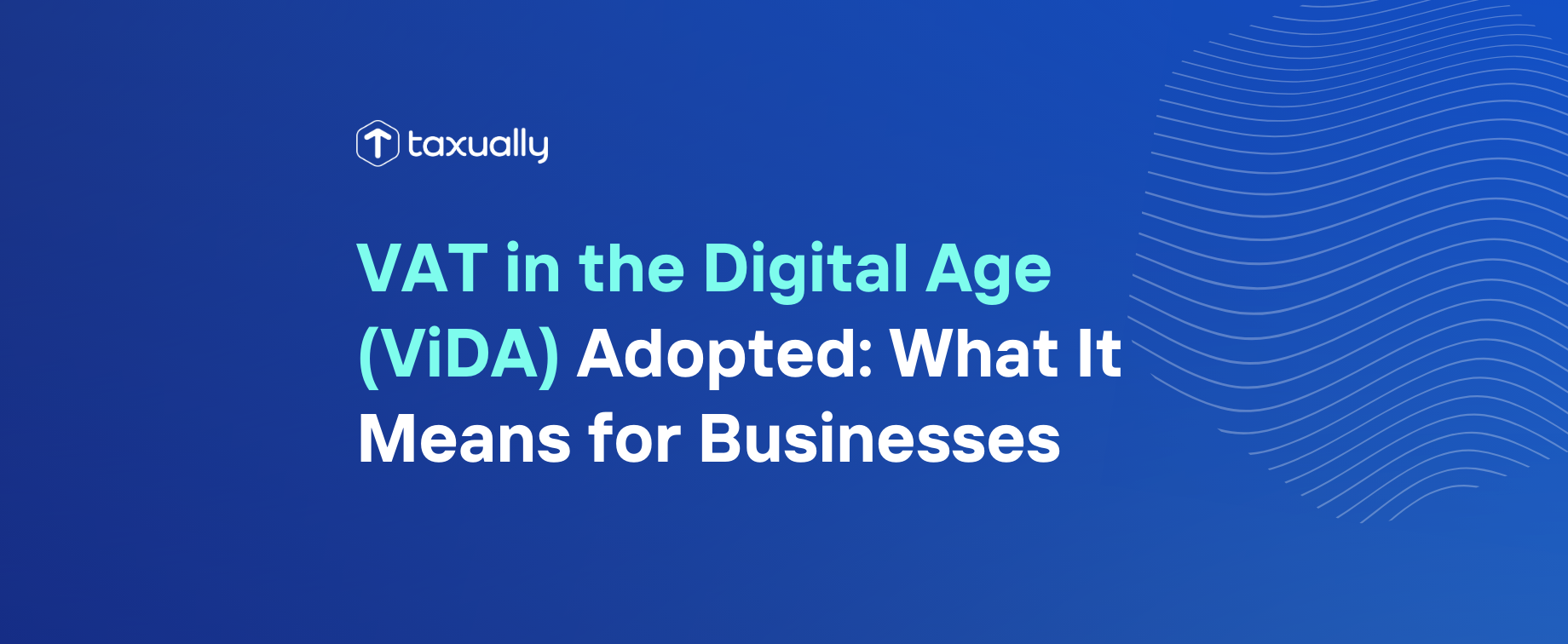VAT in the Digital Age (ViDA) Adopted: What It Means for Businesses

The European Union has officially adopted the VAT in the Digital Age (ViDA) reform, ushering in a new era of tax compliance and reporting for businesses across the bloc. On March 11, 2025, the Council of the European Union formally approved the ViDA proposal, setting the stage for a phased implementation leading up to 2028.
The ambitious package, designed to modernize the VAT system, will introduce real-time digital reporting, extend the One Stop Shop (OSS) scheme, and require online platforms to take on more responsibility for VAT collection. While the changes will be rolled out gradually, businesses should start preparing now to avoid disruption.
Key changes under ViDA
The ViDA reform primarily focuses on three areas: digital reporting and e-invoicing, platform economy taxation, and OSS expansion.
- Digital reporting and e-invoicing The EU will move towards a real-time digital reporting system for cross-border transactions, replacing the current summary reporting through the EC Sales List. This aims to combat VAT fraud by allowing tax authorities to track transactions more effectively. The reform also introduces mandatory e-invoicing for intra-EU B2B transactions, aligning with the digital strategies of several member states already implementing similar requirements. The first phase of digital reporting requirements is expected to take effect by 2028.
- New VAT rules for online platforms Online platforms facilitating the sale of goods and services will now be required to collect VAT on behalf of sellers in certain cases. This mirrors similar rules already applied to e-commerce marketplaces under previous EU VAT reforms. The change is particularly significant for gig economy services, such as short-term accommodation and ride-hailing, where platforms will be responsible for VAT compliance instead of individual providers. These new platform economy rules are set to come into force by 2027.
- Expansion of the One Stop Shop (OSS) The OSS scheme, which simplifies VAT registration for businesses selling across multiple EU countries, will be expanded to include a wider range of B2C services and certain B2B transactions. This should help reduce administrative burdens for businesses operating internationally, eliminating the need for multiple VAT registrations across the EU. The expanded OSS rules will be introduced gradually, with the first changes expected in 2025.
What’s next for businesses?
Although full implementation isn’t expected until 2028, companies should start reviewing their VAT compliance processes now. Key steps include:
- Assessing whether existing invoicing and reporting systems are ViDA-ready.
- Understanding new VAT obligations for platform operators.
- Evaluating the benefits of using the expanded OSS scheme to streamline VAT registrations.
While ViDA is expected to improve VAT collection and compliance across the EU, some critics argue that it does not fully address longstanding issues, such as the complexity of VAT rates and the varying approaches among member states. Nevertheless, the reform represents a major step towards a more harmonized and digital-first VAT system in Europe.
Businesses should stay informed and work with tax professionals to ensure a smooth transition as these changes take effect.
Do you need help with your VAT compliance? Book a free call with one of our VAT experts to find bespoke solutions for your business, optimize your VAT costs, and reach millions of new potential customers.





